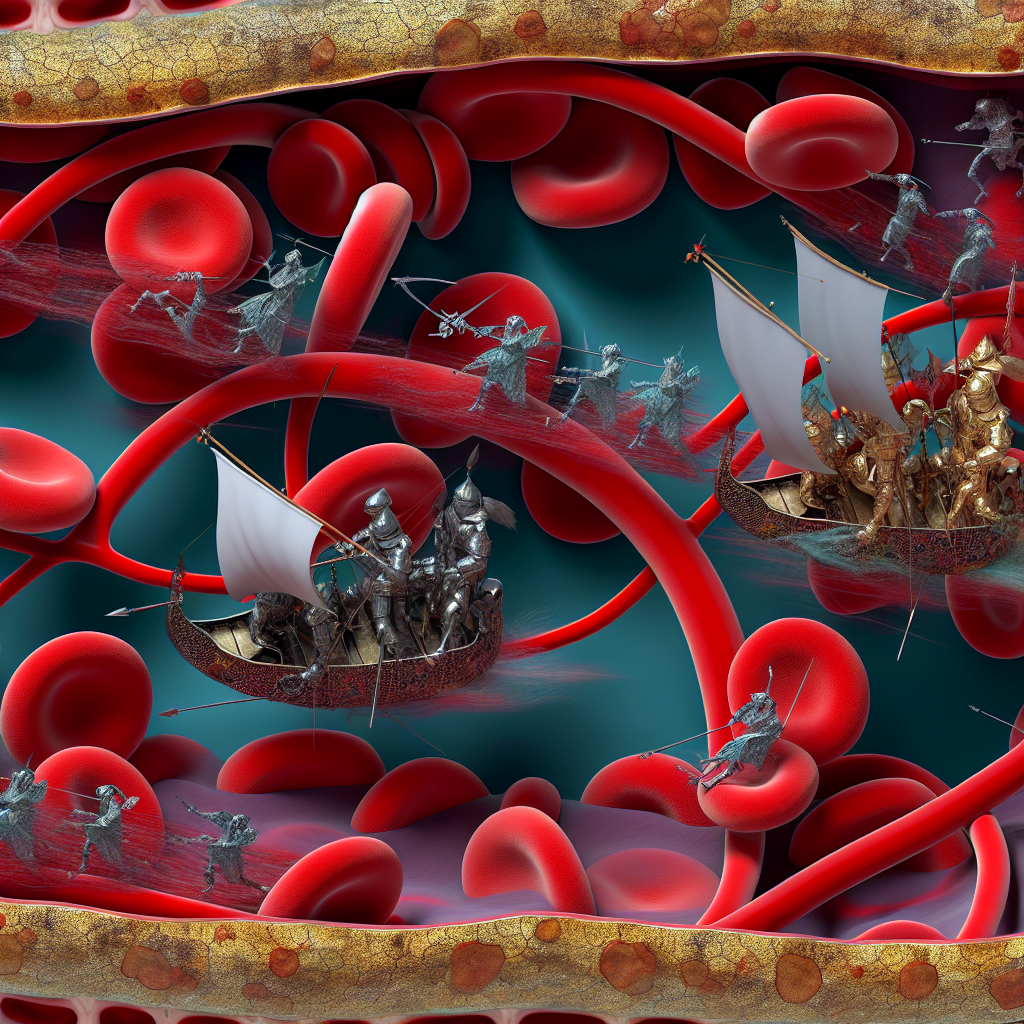The Medieval Guild of Glucose Knights: How Dark Ages Physicians Believed Blood Sugar Was Controlled by Tiny Armored Warriors Fighting Off 'Hunger Demons'
Translated from the recently discovered Codex Glycemicus (circa 1267 AD), with annotations by Dr. Eleanor Fitzwilliam, Professor of Historical Medicine, University of Cambridge
The Lost Knowledge of Humoral Knights
In the modern understanding of human metabolism, we recognize glucose regulation as a complex hormonal process involving insulin, glucagon, and cellular receptors. However, a remarkable manuscript discovered in the sealed archives of Mont Saint-Michel reveals that medieval physicians held a dramatically different view—one where miniature armored warriors patrolled the bloodstream, defending the body against entities they called "famis daemonia" (hunger demons).
This extraordinary text, the Codex Glycemicus, attributed to Brother Alduous of Normandy (1210-1278), details what may be the most elaborate pre-modern theory of blood sugar regulation ever documented. The manuscript's illuminated pages depict tiny knights in varied armor, each responsible for different aspects of what we now understand as glycemic control.
"And so it is known that within each man's blood dwelleth a sacred brotherhood of minuscule knights, no larger than a grain of sand, yet mighty in their purpose. These noble Glucose Knights, ordained by God Himself, do battle with the hunger demons that seek to weaken the mortal vessel." — Codex Glycemicus, Folio 23r
The Hierarchy of Glucose Regulation
According to Brother Alduous, the Knights were organized into distinct orders, each with specialized functions:
-
The Order of Insulin Paladins — Clad in silver armor, these knights carried tiny keys (representing what we now know as insulin) that would "unlock the doors of muscle and fat chambers" to allow sugar to enter. When modern medicine discovered insulin in 1921, they had no idea medieval physicians had conceptualized its function—albeit through a fantastical lens.
-
The Liver Sentinels — Wearing bronze armor with shield emblems resembling livers, these warriors guarded what Brother Alduous called the "great sugar storehouse" (glycogen reserves). When hunger demons grew too numerous in the blood, these knights would "release the stored sweetness" into the bloodstream.
-
The Pancreatic Templars — The elite commanders who could sense when hunger demons multiplied and would signal the Insulin Paladins to mobilize. The manuscript describes them as having "eyes that perceive the invisible sweetness in the blood."
Hunger Demons and Their Manifestations
The text describes in remarkable detail the "hunger demons" that medieval physicians believed caused low blood sugar symptoms:
"The first sign of demon invasion is the trembling of hands, as the tiny beasts shake the very foundations of the flesh. Then cometh the cold sweat, as the body weepeth at their presence. The mind groweth confused, for the demons cloud the humours of thought. And if the Knights fail in their holy duty, the afflicted may fall into a swoon or fit, as the demons claim victory over the mortal form."
This description bears a striking resemblance to what we now recognize as hypoglycemic symptoms, suggesting that medieval physicians were keen observers of metabolic disturbances, even if their explanatory framework was fantastical.
Treatment Protocols and Interventions
The Codex prescribes specific interventions to "strengthen the Knights" in their battle:
- Consumption of honey or sweet wines to "provide weapons" to the Knights (analogous to modern glucose administration)
- Specific prayer times aligned with meals to "summon the Knights to readiness"
- Avoidance of "excessive fasting" which would "weaken the Knights' armor"
- Regular physical activities to "train the Knights in battle readiness"
Dr. Bartholomew Wingate, a 14th-century physician from Oxford whose journals were found alongside the Codex, wrote of successful treatments: "I administered the honey elixir to Lady Pembroke when she fell into a hunger-demon swoon during her devotions. Within moments, color returned to her cheeks, and she proclaimed that she could feel the Knights regaining control of her blood rivers."
Modern Parallels and Insights
While modern endocrinology has replaced knights and demons with hormones and cellular mechanisms, the medieval framework provided an intuitive model that patients could understand. The Glucose Knights theory offered medieval patients a concrete visualization of an invisible process—not unlike how modern diabetes educators use metaphors like "keys and locks" to explain insulin function.
Dr. Richard Banting of the Historical Endocrinology Society notes, "What's fascinating is how the medieval mind created a coherent system that accounted for observable phenomena. When patients experienced hypoglycemia, the explanation that 'hunger demons are winning the battle' provided a framework that made sense within their worldview. In some ways, it's not entirely different from how we use accessible metaphors to explain complex biological processes to patients today."
The Manuscript's Significance
The discovery of the Codex Glycemicus challenges our assumptions about medieval medical knowledge. While the framework of knights battling demons seems fanciful to modern readers, it represents an attempt to systematize observations about blood sugar fluctuations centuries before the scientific method was formalized.
As we continue to translate and analyze this remarkable text, we gain insight not only into medieval medical theories but also into the human tendency to create meaningful narratives around bodily processes we cannot directly observe. The Knights of Glucose may have been imaginary, but the symptoms they were created to explain were very real—a reminder that even our modern medical frameworks may someday be viewed as quaint approximations of more complex realities yet to be discovered.
This research was presented at the 43rd International Congress on Medieval Medicine and appears in the Spring issue of the Journal of Historical Metabolic Science.
